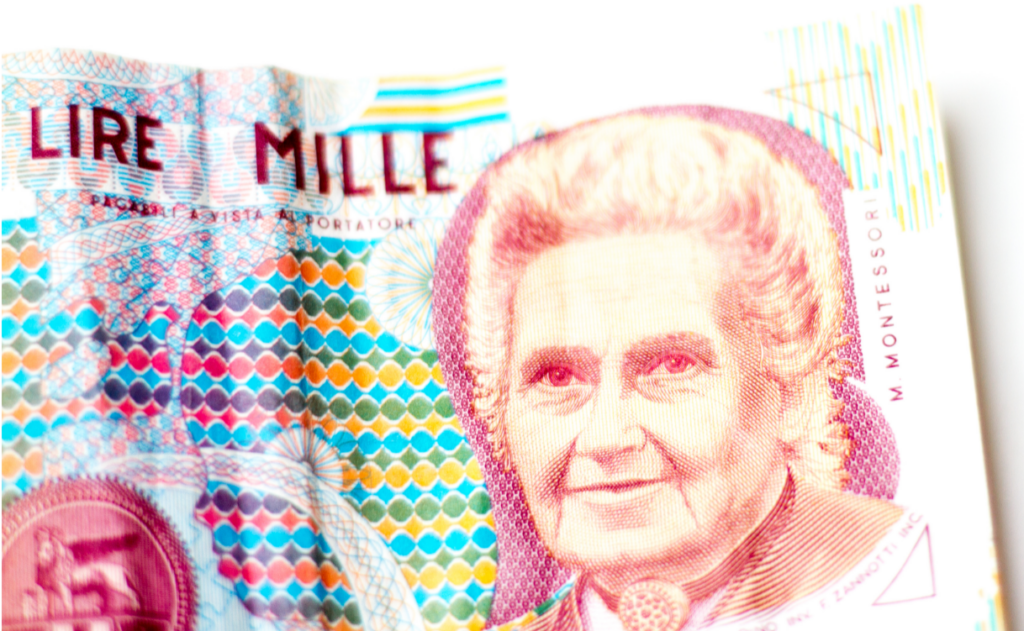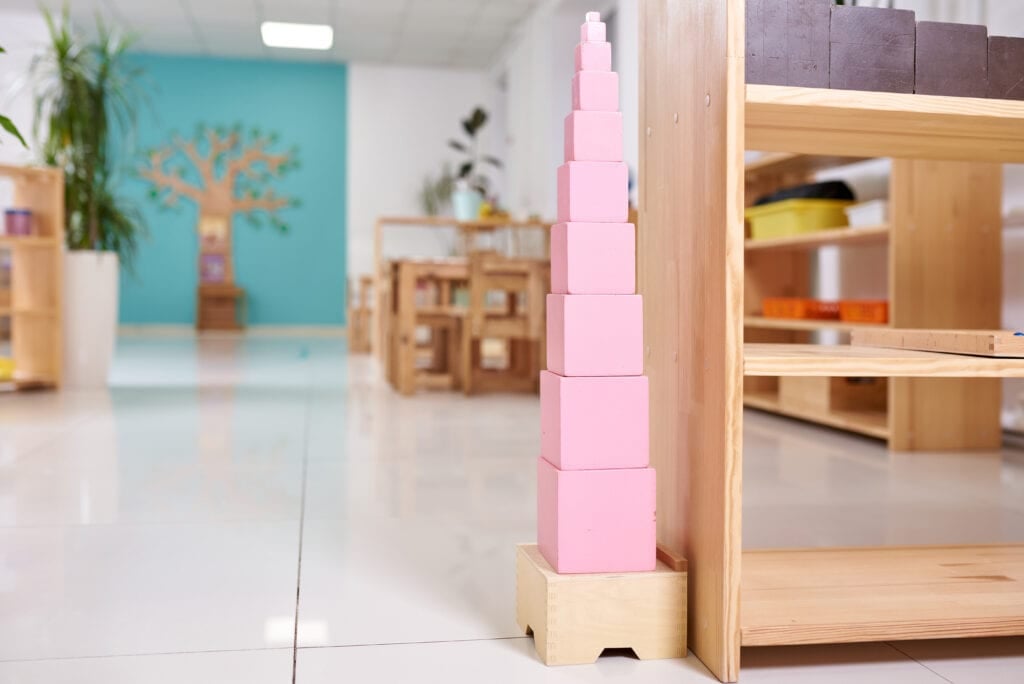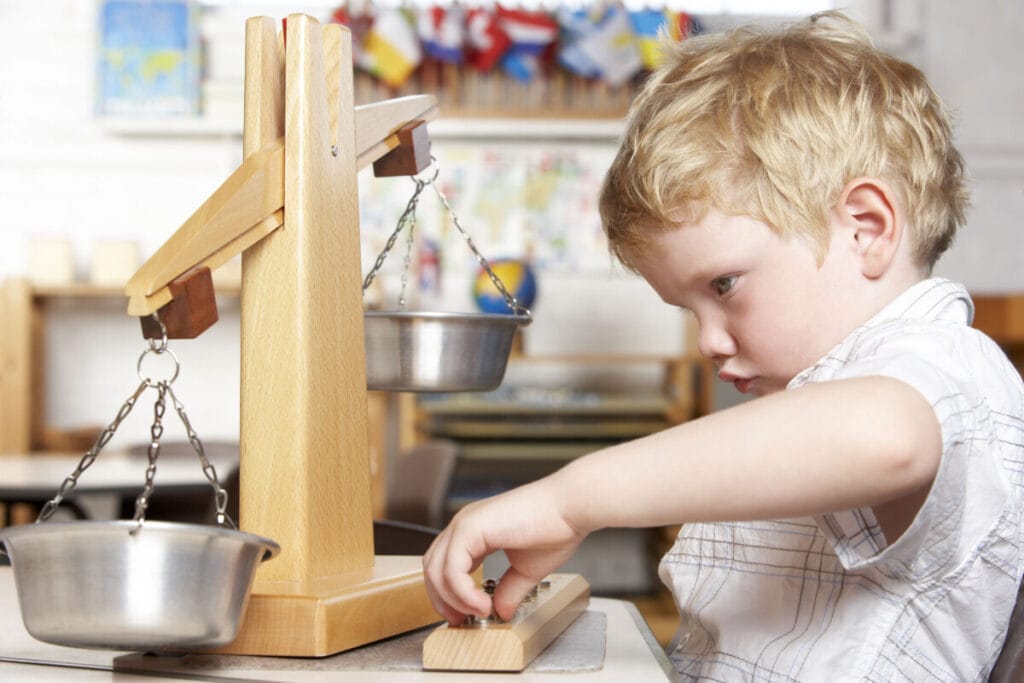Children of any age can benefit from
1. Montessori Mobile Activities
Between the ages of 3-6 months, babies start to develop hand control and learn to grasp and reach for items in their environment. This makes a mobile the perfect activity! Mobiles are the work of the infant.
The Gobbi Mobile is a great activity for infants because it is visually stimulating and encourages the child to reach for and bat at the mobile’s hanging spheres.
The Gobbi Mobile is one of four

Montessori for Today picks out furniture, educational tools, toys and lifestyle items that we think are the best and most exciting, based on independent research and careful consideration. On some occasions we earn revenue (at no additional cost to you) if you click the links and buy the products. But this doesn’t affect what we choose to highlight and we will never let it bias our coverage.
3 months of age is the perfect time to introduce the Gobbi Mobile to your child. The activity would be to place your child on their back so that they can stare up at the mobile. Because the mobile consists of one color, it helps your child develop their visual skills.
The Dancer Mobile (like this one on Etsy) is a second mobile you can introduce when your baby is 3 months old. This mobile is both a visual challenge and a delight for your infant. The Dancer Mobile is made up of human figures that have moving parts. The dancer’s legs, arms, and heads move separately. The dancers’ movements help infants work on their visual tracking skills.
2. Treasure Basket
The treasure basket is a staple in
A treasure basket is a lightweight wooden basket filled with items your child can discover and explore. One of the best treasure baskets for infants is one filled with textured rubber balls. Some of the balls should have protrusions on them to make them even more interesting.
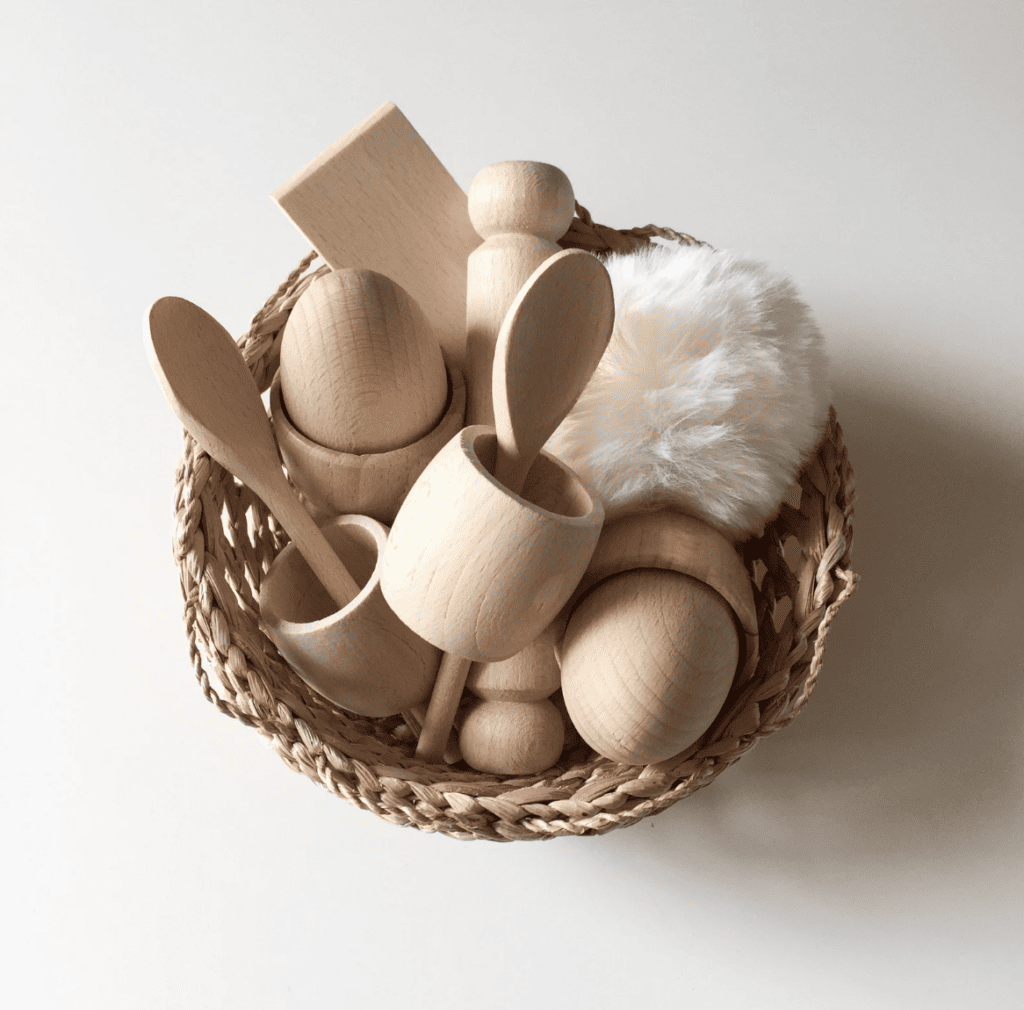
For this activity, you can place the baby on their stomach for tummy time and put the basket in front of them. They will reach for the objects in the basket. A treasure basket is a great activity for infants five months upwards.
You can theme the treasure basket, but should not place more than three items in the basket at once. Some ideas include:
- Home objects: You can group items by room or function, for example, you can make a baking utensil basket where you can put a metal whisk, spoon, and measuring cup.
- Ribbons of varying colors and patterns.
- Textured rubber or silicone balls. They should range in shape, and color and have protrusions.
- Brushes. You can use makeup brushes, paintbrushes, and hair brushes.
One rubber ball may be enough to engage your infant if you are not certain they are developmentally ready for a treasure basket. You can place it in your baby’s hand.
3. Interlocking Discs
Interlocking discs are a great activity consisting of two discs interlocked at a 90-degree angle. The interlocking discs help infants work on their hand movement and grasping.
To introduce the discs to your infant, place them in their hand. They will grasp the discs instinctively using their reflexive grasp. They will put it in their mouth to explore the object. Infants usually begin intentionally grasping objects around three to four months.
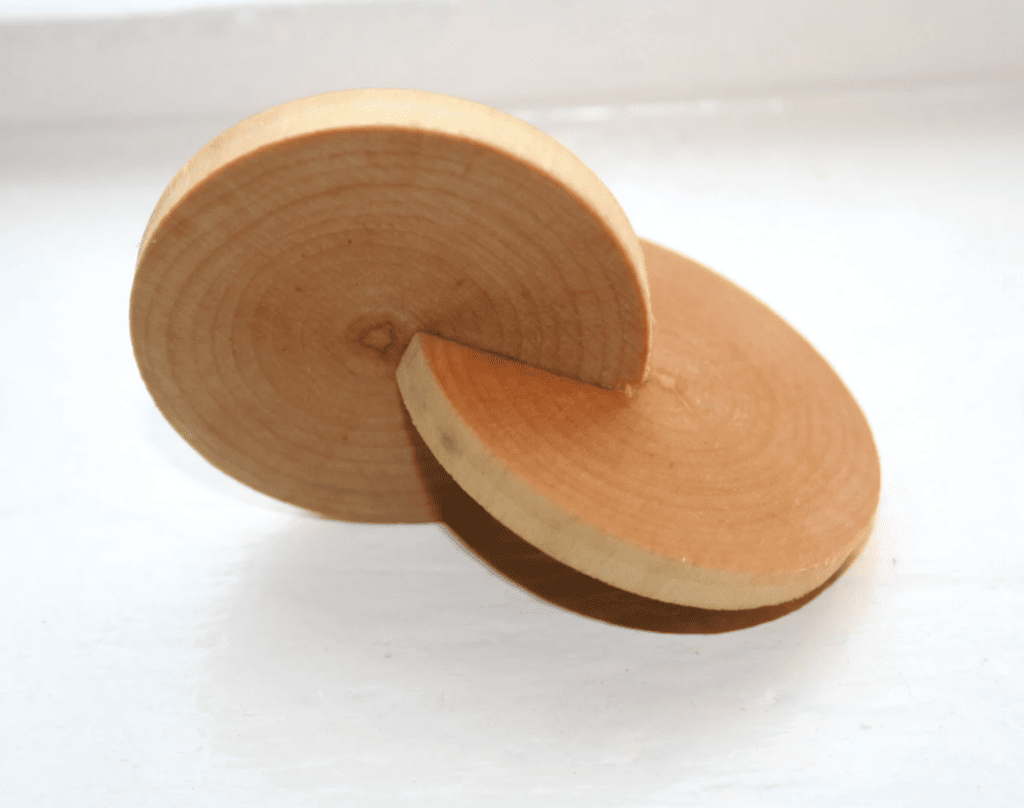
Babies who are intentionally grasping objects will actively start reaching for things with one or both hands. They will use their whole hand to grab the object. Giving your baby the interlocking discs will encourage them to intentionally grasp and exchange an object from one hand to the other.
4. Teethers
There are various types of
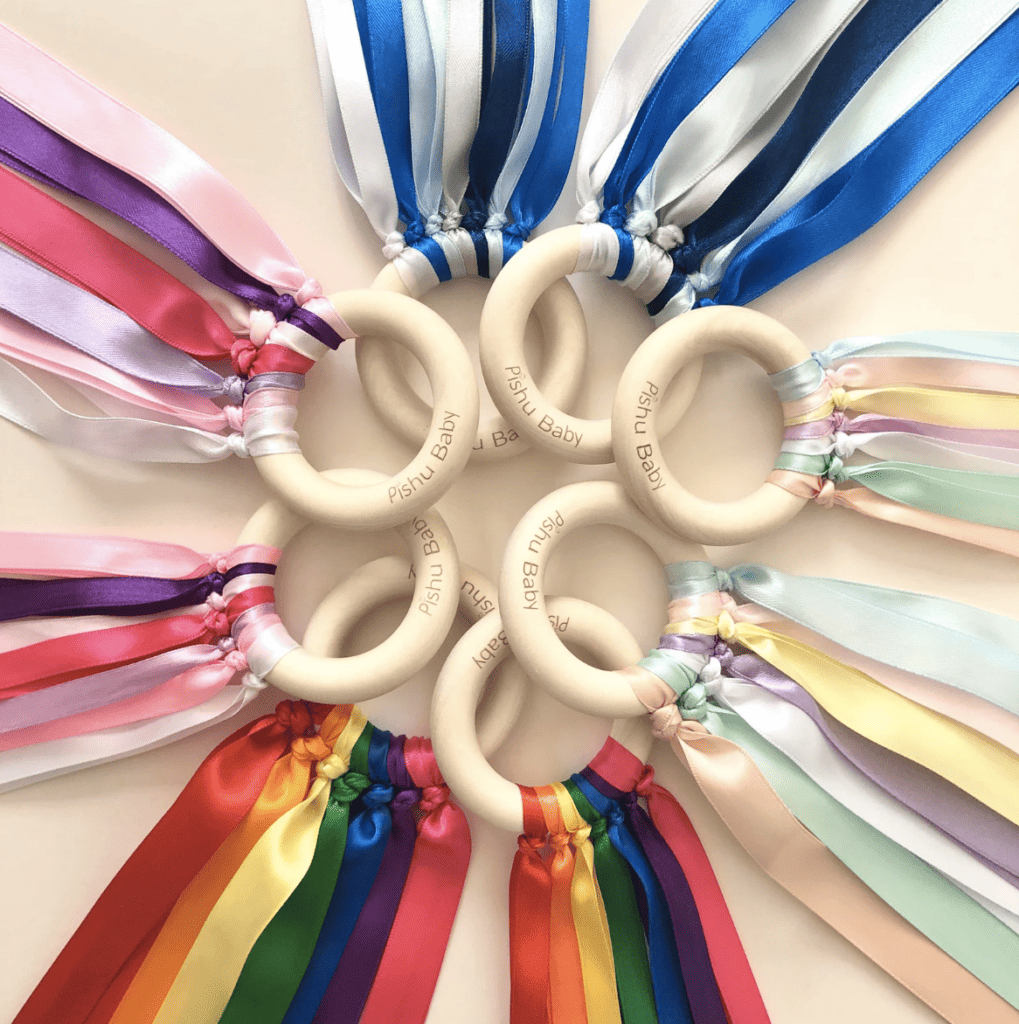
Infants from 3 to 6 months can be introduced to a wooden teether with a silk scarf or silk ribbons attached. (These are also called hand kites). This adds an interesting tactile dimension to the activity, giving them another texture to explore. You can give your baby a teether to interact with when they are on their back or side.
5. Grasping Beads
Between 3 and 4 months of age is the perfect time to introduce your infant to grasping beads. This activity is great for helping your baby transition from reflexive grasping and gripping to intentional grasping.
There are usually five round wooden beads threaded through a ribbon. You can offer the grasping beads to your baby when they are on their back, tummy, or side. You can hold the beads out for your baby to see if they will voluntarily reach out to grab them.
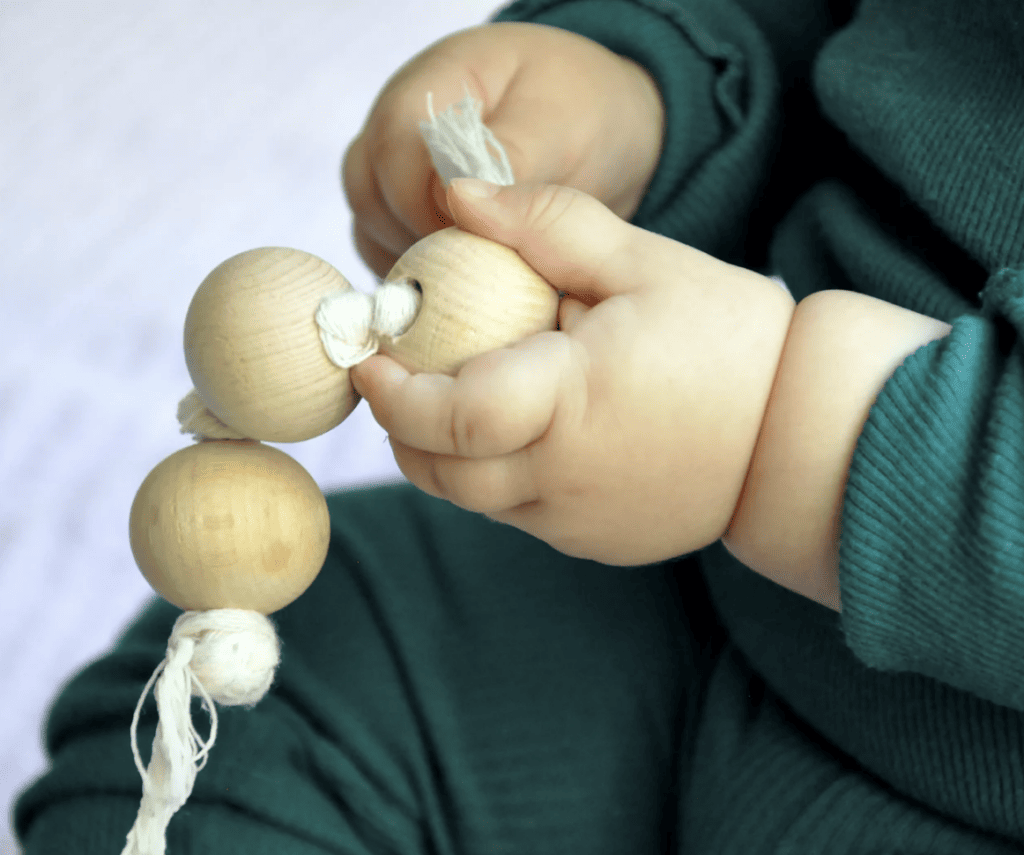
The key thing to remember during this activity is not to make it too hard for your baby to reach for. Be careful not to be too far away when you offer the beads so they don’t get frustrated. The aim is to help them with their cognitive processing and grasping.
6. Placing Your Baby In Front of a Mirror
The simple act of placing your infant in front of a mirror on its side, back, or stomach can enrich your infant’s development. Babies love to see themselves in the mirror. Although initially, they may not understand who it is they are seeing.
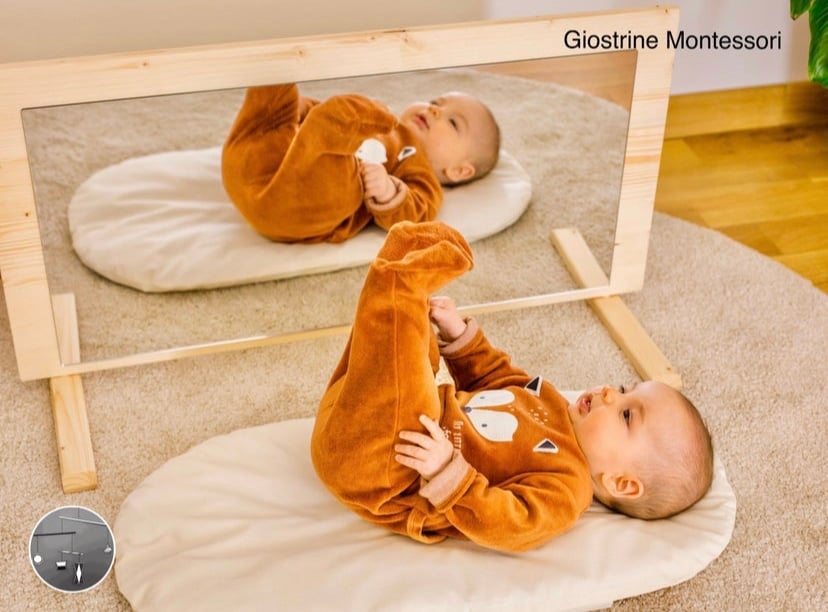
They like to watch their bodies move, and the expressions their faces make. Babies will be curious to know what is going on in the mirror. Aside from being entertaining and stimulating, it helps to aid their visual development and helps to develop their self-awareness.
More on the benefits of mirrors for babies here.
7. Suspended Ring or Bell
There are several activities you can do with your 3 to 6-month-old baby that involve suspending items above them for them to reach for, bat and grasp. You can use one of your mobiles or play gyms to hang the items.
- The first variation of this activity is to tie one teething ring onto an elastic spring and suspend it above your baby, who should be placed on their back for this activity. Your baby will reach for the ring, batting at it and trying to grab it. When they can grab it, they will pull it towards themself and then let it go, watching as it bounces back.
- The second variation of this activity is to thread a bell onto a ribbon, which is attached to an elastic string. Your baby will bat at the bell and pull it towards them. This activity is great for auditory development, in addition to voluntary grasping and hand control.
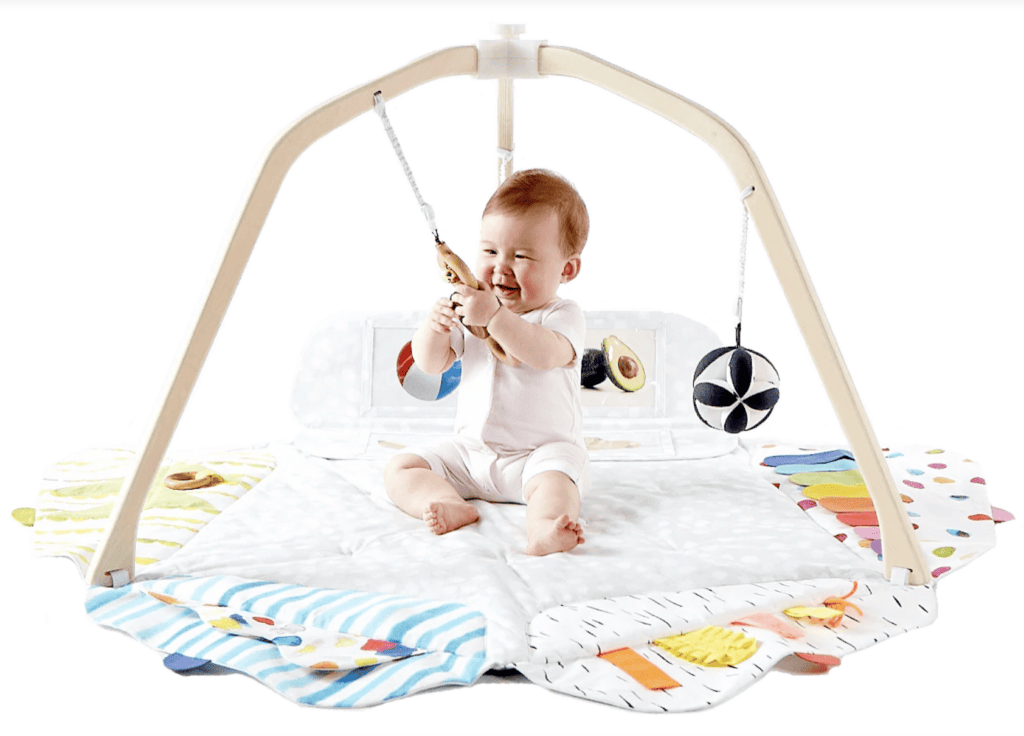
8. Exploring Outside
One of the hallmarks of
Weather dependent, the only thing you will need for this activity is a blanket and a suitable outdoor environment (such as a park or backyard). Lay the blanket on the grass and place the baby on the blanket on its back. It is always good to try and place them underneath a tree, or cloudy sky so they can track the movement of the leaves and clouds in the wind.
You can pull the blanket back and let the baby explore the grass with their feet, or place them on their tummy and let them explore with their hands. Being outside in the natural world is a multi-sensory experience for your baby.
9. Reading to Your Baby
Another simple but developmentally beneficial activity you can do with your infant is to read to them. Reading to your infant has been shown to help with their language development and emotional development.
When reading to your infant try to choose simple, reality-based books that have more high-contrast pictures than words. One or two words per page are ideal for this age group. Your infant will not understand what you are reading to them, but they will begin to notice the change in your voice as you read.
Reading and talking to your baby helps them to build the foundation they need for language development. Research suggests that by the age of 6 months babies have learned the basic sounds of their home language.
10. Bells on a Leather Strap
One of the first activities you can give to your infant to help with their auditory development is to give them three bells attached to a leather strap. The leather offers an interesting tactile experience while the bells will delight their auditory senses.
This activity helps children begin to understand that they can manipulate their environment. Your baby will learn that when they manipulate the object, it makes a sound. It is recommended to introduce this activity from 4 months onwards.
11. Interlocking Rings
Interlocking rings consist of three or four rings that are interlocked. They are a material designed for grasping that can help with auditory development. For this activity, you will need a set of interlocking rings, made of wood or stainless steel.
You can place the rings in your baby’s hand, or hold them out for them to grab from you. They will explore the rings by manipulating them with their hands, shaking them, and placing them in their mouth. As they manipulate the rings, they make a noise. As your baby develops they will start to notice that wood makes a different sound to stainless steel when manipulated.



